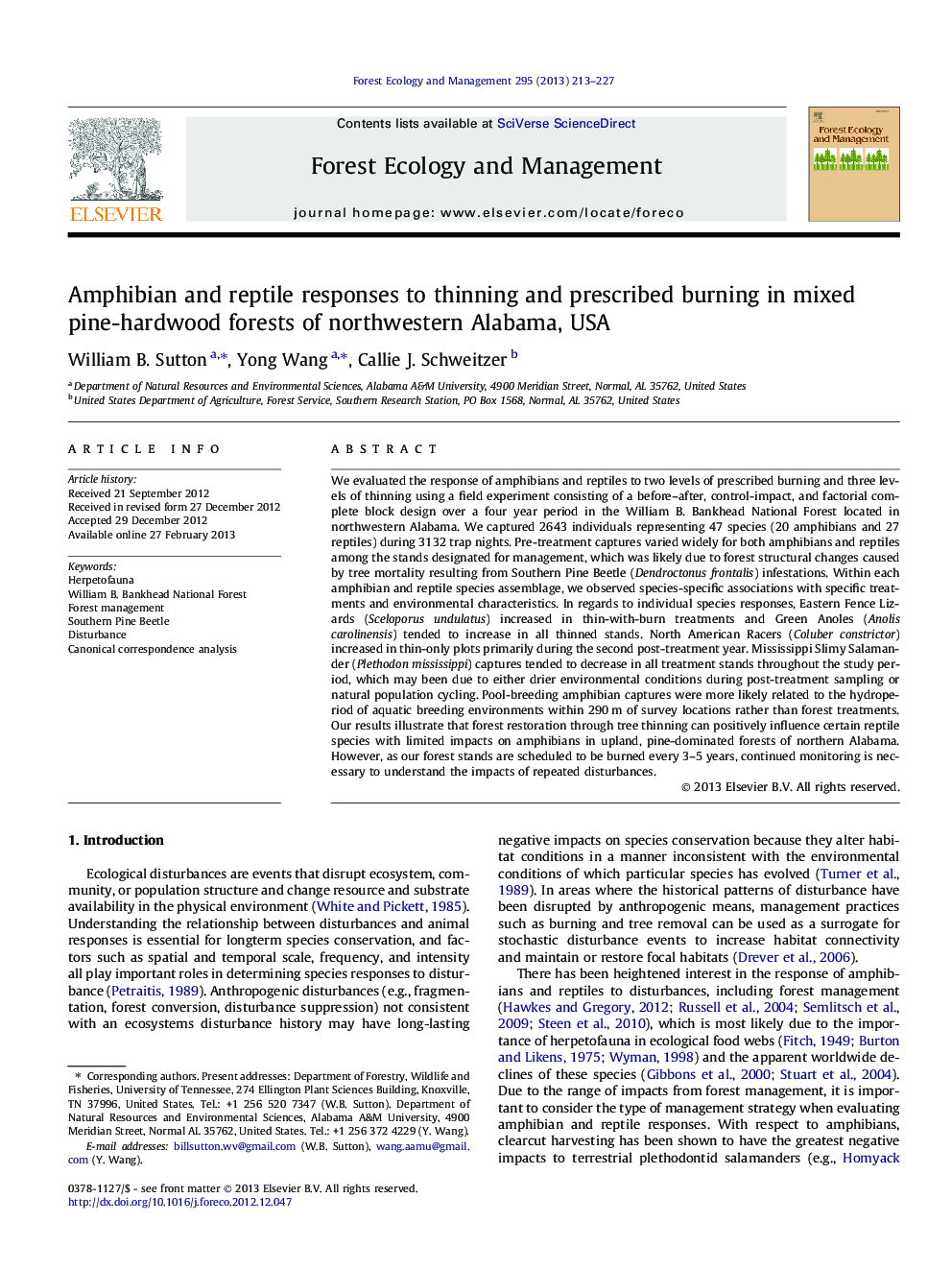| کد مقاله | کد نشریه | سال انتشار | مقاله انگلیسی | نسخه تمام متن |
|---|---|---|---|---|
| 86867 | 159217 | 2013 | 15 صفحه PDF | دانلود رایگان |

We evaluated the response of amphibians and reptiles to two levels of prescribed burning and three levels of thinning using a field experiment consisting of a before–after, control-impact, and factorial complete block design over a four year period in the William B. Bankhead National Forest located in northwestern Alabama. We captured 2643 individuals representing 47 species (20 amphibians and 27 reptiles) during 3132 trap nights. Pre-treatment captures varied widely for both amphibians and reptiles among the stands designated for management, which was likely due to forest structural changes caused by tree mortality resulting from Southern Pine Beetle (Dendroctonus frontalis) infestations. Within each amphibian and reptile species assemblage, we observed species-specific associations with specific treatments and environmental characteristics. In regards to individual species responses, Eastern Fence Lizards (Sceloporus undulatus) increased in thin-with-burn treatments and Green Anoles (Anolis carolinensis) tended to increase in all thinned stands. North American Racers (Coluber constrictor) increased in thin-only plots primarily during the second post-treatment year. Mississippi Slimy Salamander (Plethodon mississippi) captures tended to decrease in all treatment stands throughout the study period, which may been due to either drier environmental conditions during post-treatment sampling or natural population cycling. Pool-breeding amphibian captures were more likely related to the hydroperiod of aquatic breeding environments within 290 m of survey locations rather than forest treatments. Our results illustrate that forest restoration through tree thinning can positively influence certain reptile species with limited impacts on amphibians in upland, pine-dominated forests of northern Alabama. However, as our forest stands are scheduled to be burned every 3–5 years, continued monitoring is necessary to understand the impacts of repeated disturbances.
► Lizards displayed species-specific responses to forest management.
► Some large-bodied snake species increased in thinned forest stands.
► Salamander declines were related either to rainfall patterns or population cycling.
► Pond-breeding amphibian captures were linked to the hydroperiod of aquatic habitats.
► Herpetofaunal responses were exacerbated by Southern Pine Beetle disturbances.
Journal: Forest Ecology and Management - Volume 295, 1 May 2013, Pages 213–227